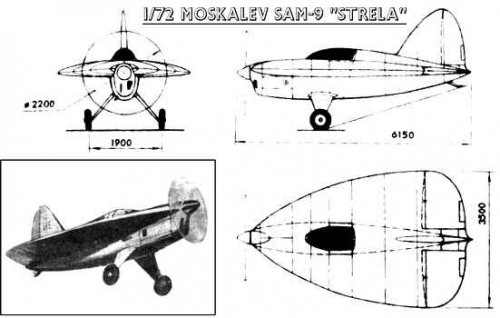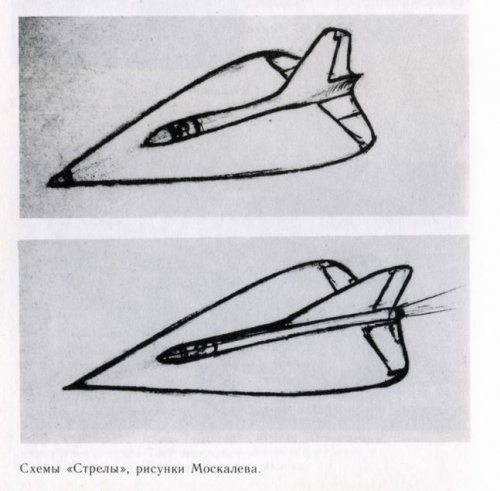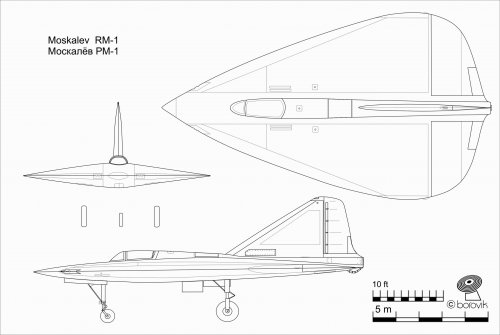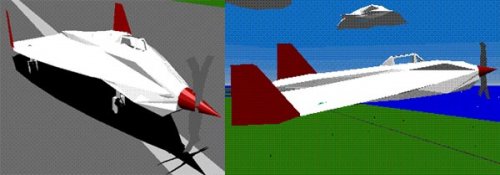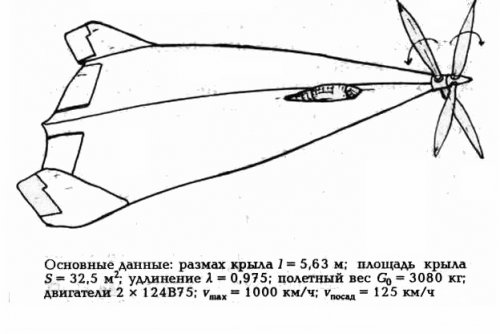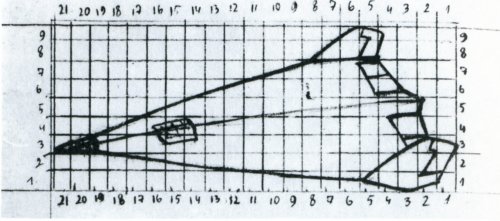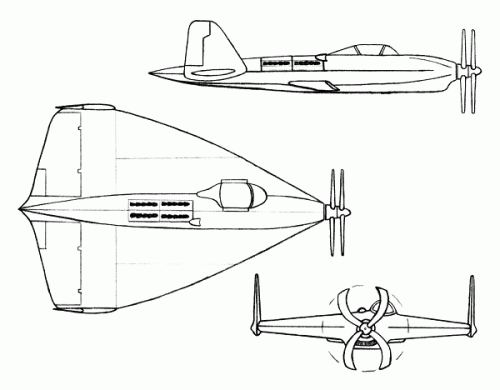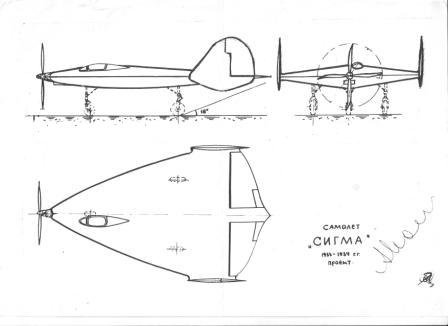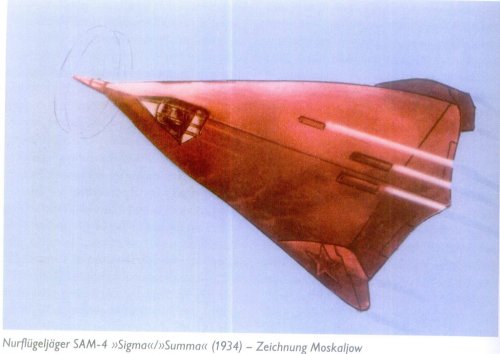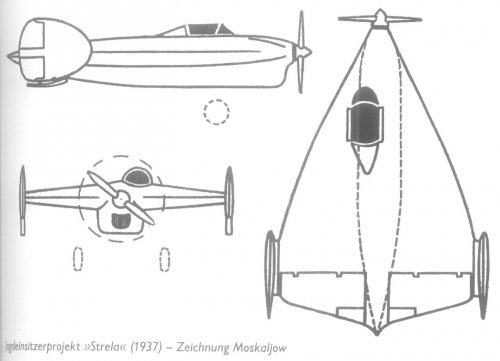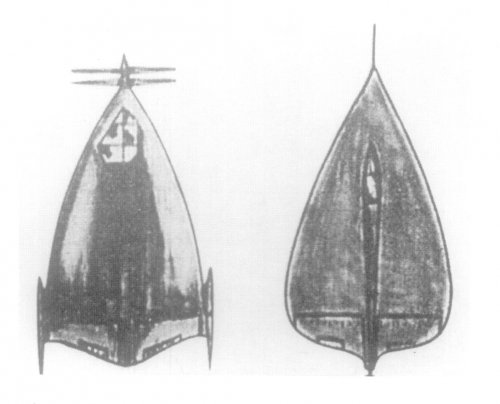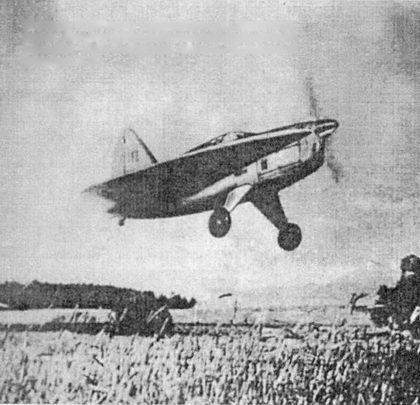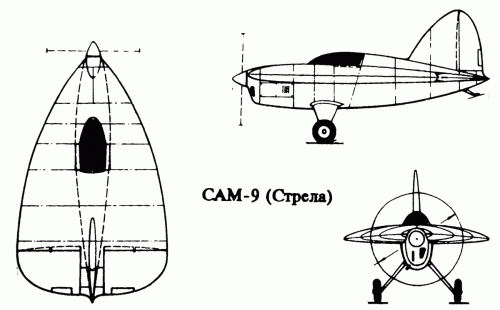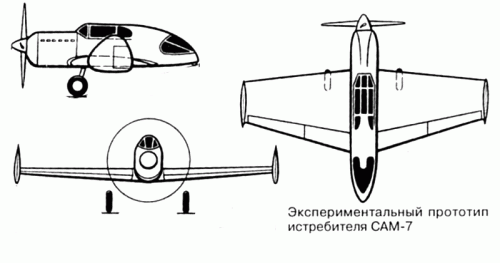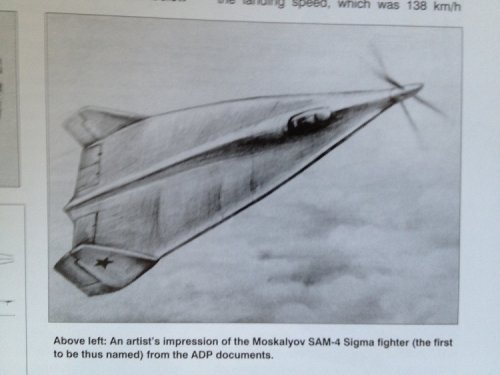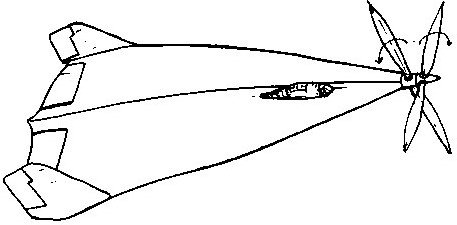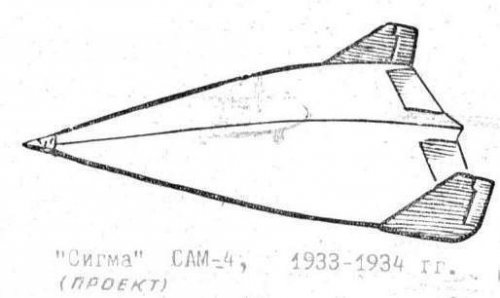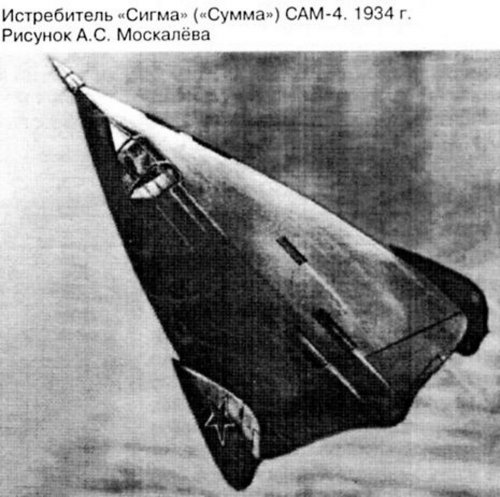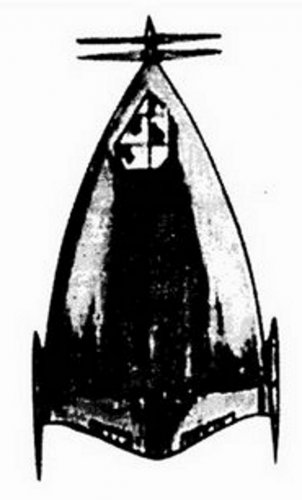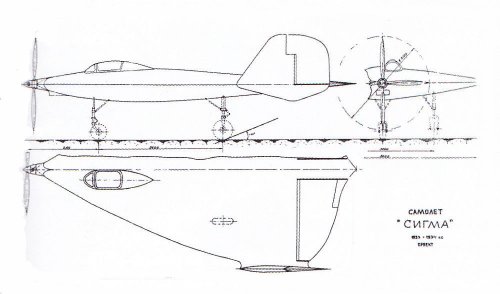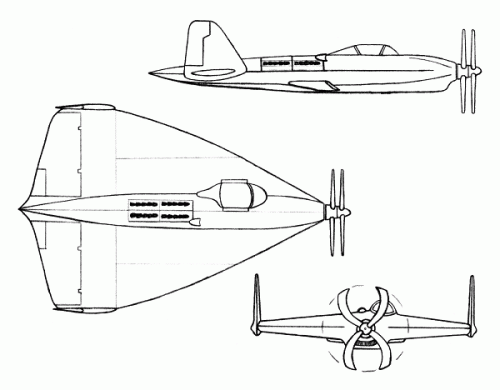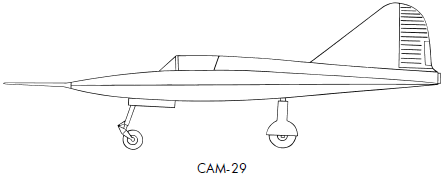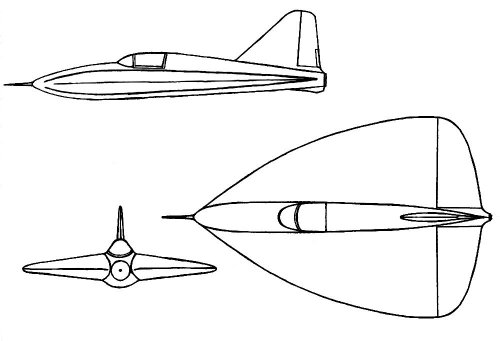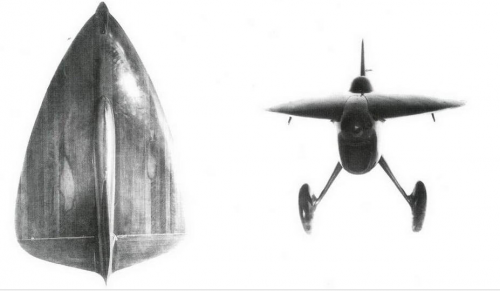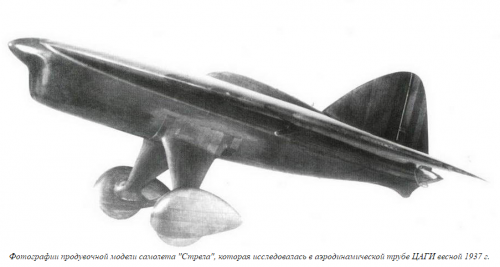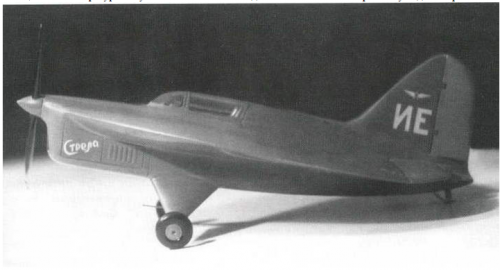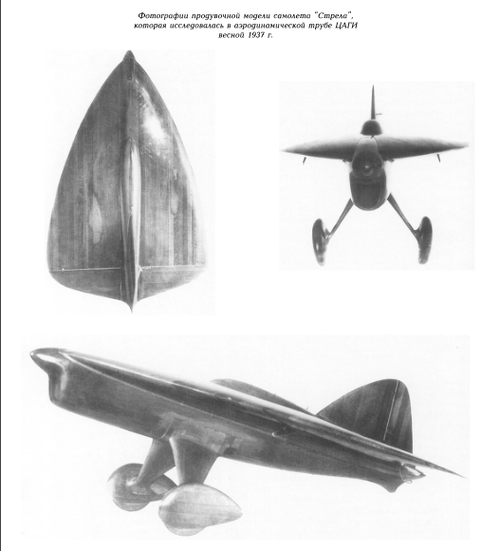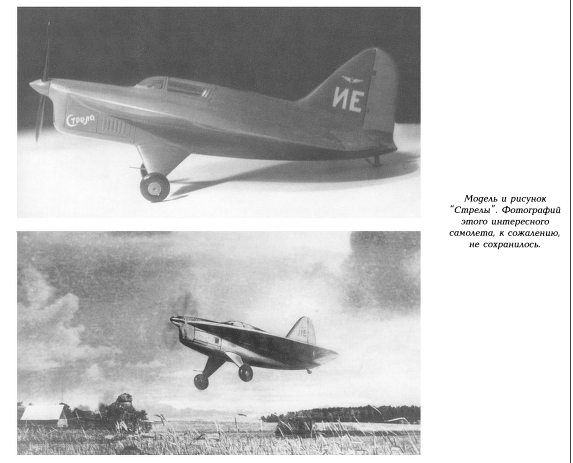Hi! I can see air intake at right side wing leading edge of SAM-4 top picture. What is this? Engine ram air intake? Engine exhaust nozzle position are mystery for me.
https://www.ecured.cu/Moscaliov_SAM-4
"History
In August 1933 in a personal conversation of Moscaliov with the head of the GUAP , Piotr Ionovich Baranov , the idea arose of studying the projection of a hunt with the highest possible speed. Moscaliov traveled to Moscow with the aim of obtaining the formal task to design and build this aircraft. Unfortunately on September 5 PI Baranov died in a plane crash. Moscaliov decided in his personal capacity to continue the research on the subject.
Between 1933 and 1934 AS Moscaliov developed a series of experiments with different wing configurations, using the OKB experimental base of the Voronezh aviation factory and the aerodynamic chair facilities of the city's State University. In parallel, ballistic studies and the impact of projectiles on the surfaces of aircraft that move at high speeds were developed. As a result of these experiments, known as the " Sigma Project ", it was concluded that the best shape for aircraft wings designed to achieve high speeds was the low-aspect eyelet configuration. In spite of the theoretical basement, the flight at supersonic speeds was technologically impossible at the time.
A more realistic conception of the subject was the SAM-4, an airplane project powered by two 760(hp?) Spanish-Swiss piston engines with radiators using the evaporation principle and calculated to reach speeds of 1000 km / h.
Description
Looking for the best aerodynamic composition possible the project was conceived as a flying wing with the two tandem engines were located inside the wing. The two-bladed counter-rotating propellers had a curved form of scimitar (as is common in modern propellers). This configuration had to cancel the reactive moment of the propellers and allow the airplane to obtain great speeds.
The wing had vertical surfaces at the ends intended to increase stability in low-height flights and increase wing lift.
The landing gear was tricycle-type and retractable, which was something innovative for the time, and was specially designed for this aircraft.
The pilot was lying on his belly in a cabin whose bubble-shaped deck protruded through the oak of the wing.
Development
In November of 1934 the project was completed and sent to Moscow to be presented to the GUAP . The conception was so unusual and with so many technological innovations that the bureaucratic systems were unable to evaluate them objectively, which was in the cold reception of the project. AS Moscaliov was currently working on SAM-7 tail - hunt, also within the " Sigma Project ", so he was advised to leave the SAM-4 aside and continue the new project. The "Sigma" was "shelved".
Years later the TsAGI specialists would receive evidence of similar studies of low aspect ratio aircraft and pilots in prone position in the United States . Under these new circumstances Moscaliov was directed to begin the construction of a small-scale experimental version that would see the light as SAM-9 "Strelá"."
https://ru.wikipedia.org/wiki/%D0%9C%D0%BE%D1%81%D0%BA%D0%B0%D0%BB%D1%91%D0%B2,_%D0%90%D0%BB%D0%B5%D0%BA%D1%81%D0%B0%D0%BD%D0%B4%D1%80_%D0%A1%D0%B5%D1%80%D0%B3%D0%B5%D0%B5%D0%B2%D0%B8%D1%87
"Sam-4 (sum; design speed with two motors, m-34-900 km/h; there was only 1933 — 1934)"
SAM-7.
http://www.airwar.ru/enc/xplane/sam7.html
SAM-9
http://www.airwar.ru/enc/xplane/sam9.html
http://coollib.com/b/248669/read

